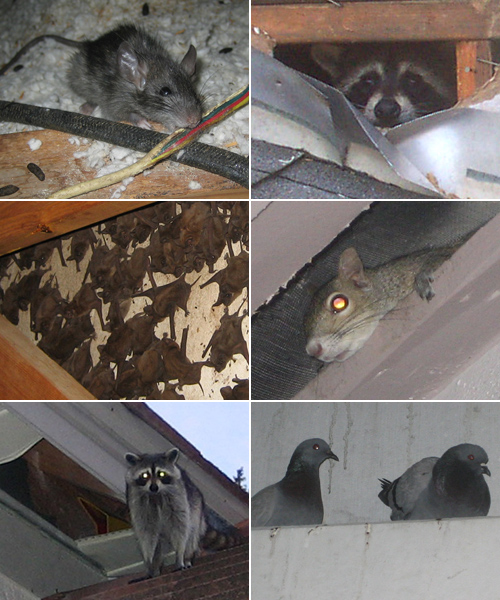- USA Wildlife Removal Education Guide and Resources
Scratching Sounds in the House, Attic, Walls, Day or Night
Scratching sounds at night: Rat or mouse, or raccoon. Or Flying Squirrel.

What To Do When You Hear Scratching Sounds In The Attic Or Walls
Hearing a scratching sound coming from the attic above your head or the walls nearby can be very concerning, and there are very few situations where this can be anything but a sign that you need to investigate and to resolve. One of the things that will surprise many people is quite how loud the scratching noise can be too, meaning that it is very difficult to ignore this kind of indication if you hear it. When you hear this scratching noise, you should look to try and identify as closely as possible where it is coming from, and this is where you should start to investigate the noise.
Common Animals That Can Be Found In The Walls And Attic
There are plenty of different species that can find their way into the cavities of your property, and rodents such as rats and mice can often make their nests in the confined spaces of the wall cavity or in the attic. Most other species such as squirrels, raccoons and opossums will usually find their way into the attic, although in some cases there can be baby animals that fall into a wall cavity and then cannot get back out again. In each case, the quicker that you can start to deal with the problem the more likely you are to solve it successfully before the animals can cause some serious damage.
Investigating The Scratching Noises
Before you go to investigate what may be causing the noise, and start crawling around the attic, make sure that you are aware of the dangers these animals can pose, and wear thick clothing and a breathing mask in case there are any harmful spores that you can inhale. Although you will often find that you don't see the animals themselves, as they will hide or get out when you approach, you will often be able to see signs of their presence such as feces or gnawing marks. When it comes to the wall cavities, you can sometimes see down into the cavity from the attic, but in other cases you may need to cut a hole in the drywall in order to get a good look at what is within the cavity.
How Do The Animals Get In?
There are many different ways that animals will get in and out, and while mice and rats will often find holes that are relatively small, larger animals will have a damaged vent or a broken soffit that they use to get in and out. Most animals will prefer to nest in a location where they have more than one potential exit route, so this is worth bearing in mind when you are repairing any damage.
Dealing With A Mother And Her Young
The majority of instances where people will hear scratching noises in the wall or attic will be during the spring period, when the animals such as opossums, raccoons and squirrels are raising their young. If you do trap an animal during this period, it is worth seeing if you can find visible nipples which could be a sign there are baby animals elsewhere within the cavities of your home, as these should be removed at the same time. Many professionals will discover the young when they are investigating the issue, and will then place these as bait in a cage trap so that the mother and her young can be relocated together.
Removing Animals Outside Mating Season
Because rats and mice breed throughout the year, it is difficult to pin down whether or not there will be young animals to remove in this case, whenever you have discovered them. Outside mating season for the larger animals, it does make your job a little easier as you will usually only have a solitary animal to deal with. Identifying areas where they regularly use as entry and exit points from the cavities will make for good positions to place your traps, and these can be baited with meat, fruit or cat food which is likely to draw the animal into the trap.
Repairing Damage In The Attic Or Wall
Once you have trapped and removed the animals that were causing the scratching noise, you will need to examine the area where the animals were found to see if there are any repairs required, including ensuring that any entry or exit holes are sealed. Look to see if any wires or wooden supports have been gnawed by the animals, and look to replace any insulation if the animals were in the attic and the insulating material has been soiled. Finally, it is worth spraying a disinfectant solution throughout the attic or the wall cavity where you discovered the animals, as this will neutralize any further contamination that is caused by the animals.
Go back to the main How to Get Rid of Wild Animals page for more information about animal trapping and information about Scratching Sounds in the House, Attic, Walls, Day or Night.

